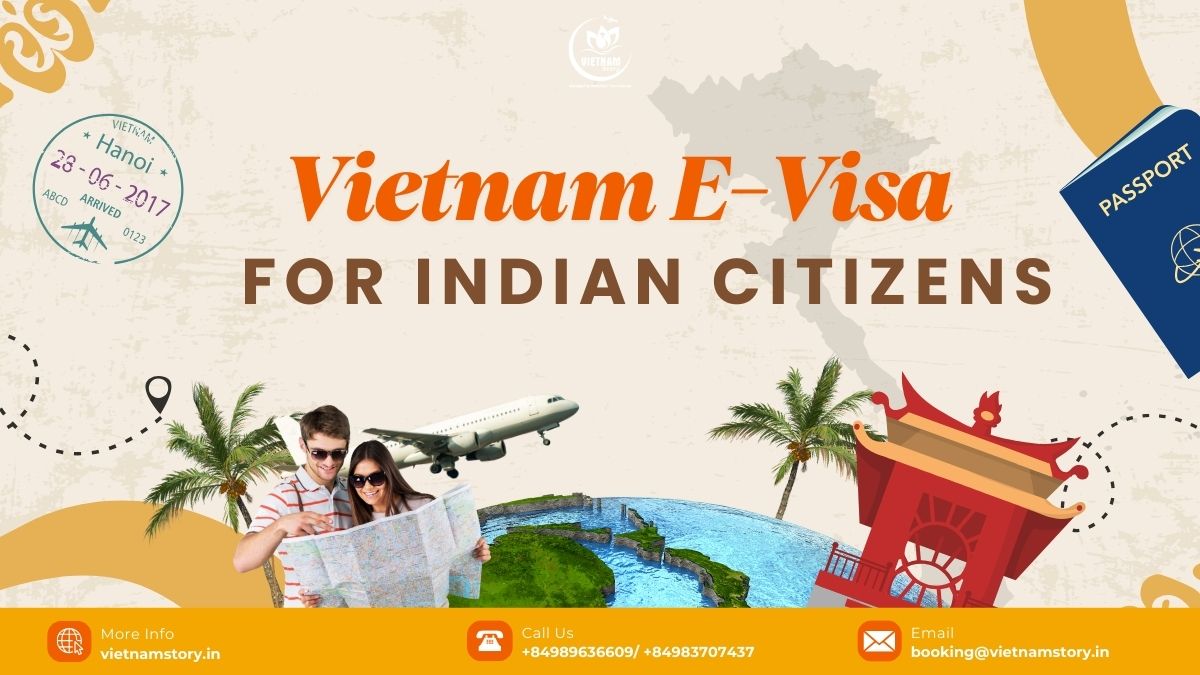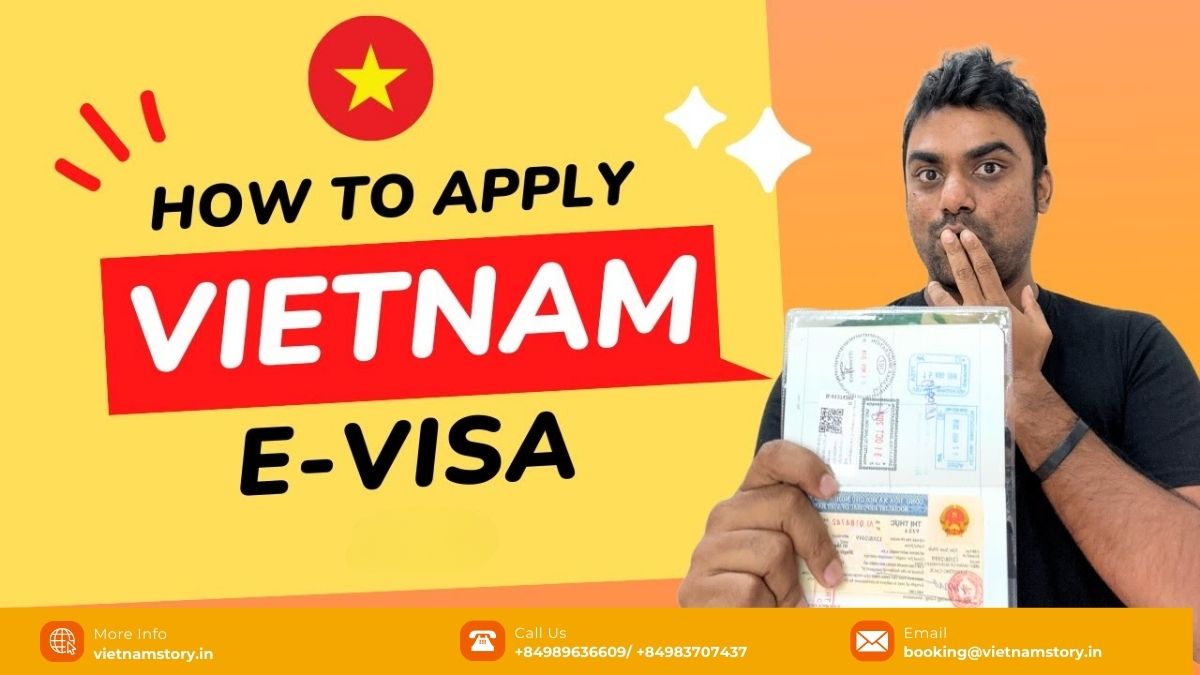The Vietnamese government has streamlined the process for eligible citizens through the introduction of the electronic visa (e-Visa), a convenient and efficient way to obtain permission to enter Vietnam. This article provides a comprehensive guide specifically tailored for Indian tourists, exploring the intricacies of the Vietnam e-visa for Indian citizens, outlining the eligibility criteria, detailing the application process, highlighting potential challenges, and offering practical tips for a smooth and hassle-free experience.

Understanding the Vietnam e-visa: A convenient gateway
The Vietnam e-Visa is an online electronic visa that allows eligible foreign nationals to enter Vietnam for a specific period of time. Unlike traditional visas that require physical visits to embassies or consulates, the e-Visa process is entirely online, making it a significantly more accessible and time-saving option. For Indian citizens, who may not have easy access to Vietnamese diplomatic missions, the e-Visa is especially advantageous, eliminating the need for in-person visits and streamlining the application process.
The e-Visa is primarily intended for tourism and business purposes, allowing eligible travelers to enter Vietnam for a specified duration, typically up to 30 days. This system was introduced to facilitate tourism and trade, promoting greater accessibility for travelers interested in exploring the country’s diverse offerings.
It also represents a modern approach to travel authorization, embracing technology and streamlining the traditionally cumbersome visa process.
READ MORE: Briefs about Vietnam visa for Indians
Eligibility requirements: Ensuring you meet the criteria
Before beginning the e-Visa application process, it is essential to verify that you meet all eligibility criteria, as incorrect or incomplete information may lead to delays or rejection.
- Passport requirements: Your Indian passport must be valid for at least six months beyond your intended date of departure from Vietnam. This passport validity requirement ensures you have enough time to complete your travel plans without facing difficulties due to an expired passport. The passport should also have at least two blank pages for entry and exit stamps.
- Purpose of visit: The e-Visa is designed primarily for tourism or business purposes. If your intended purpose for visiting Vietnam is for reasons other than tourism or business, such as work, education, or long-term stays, you may need to apply for a different type of visa through the Vietnamese embassy or consulate. Be sure to identify the correct visa category for your specific reason of travel.
- Other eligibility criteria: There may be other specific eligibility criteria, which may be updated by the Vietnamese government. It is always best to refer to the official government website to ensure you have met all eligibility requirements before starting your application.
The application process Vietnam e-visa for Indian citizens
Applying for a Vietnam e-Visa for Indian citizens is a fairly straightforward online process, if you follow the guidelines closely and ensure that you provide all necessary information and documentation correctly.
Official website: Your gateway to the e-Visa
The first step is to access the official website of the Vietnamese government’s e-Visa portal. It’s essential to use only the official website to avoid scams and fraudulent applications. Be wary of unofficial websites that may attempt to collect your personal information and visa fees. Always verify the web address to ensure you are on the legitimate government site.
Online application form
The e-Visa application form requires you to provide a variety of personal information, including your full name, date of birth, passport details, travel itinerary, and the purpose of your visit. This information is crucial to your visa application, so it’s important to fill out the form accurately and truthfully. Ensure all details, particularly your passport information, matches your travel documents exactly to avoid any problems.
Required documents:
- Scanned passport bio page: You will be required to upload a scanned copy of your passport bio page, which shows your photo, personal details, and passport number. This scan must be high-quality, clear, and readable, ensuring that all information is legible and accurate.
- Digital passport-sized photograph: You’ll also need to provide a digital passport-sized photograph of yourself, meeting specific requirements regarding size, background color, and quality. Be sure to follow the precise specifications provided on the official website, as incorrect photos may lead to a delay or rejection of your application.
- Proof of accommodation: You will be asked to provide proof of your confirmed accommodation in Vietnam, which may be in the form of a hotel booking or a confirmed address.
- Travel itinerary: You will be required to submit your travel itinerary, including your flight details and planned destinations within Vietnam. This itinerary provides proof of the reason for your visit and your intended plans.
Payment of fees
You will be prompted to pay the applicable e-Visa fee, which is non-refundable, even if your application is rejected. The payment process is conducted through a secure online payment gateway, accepting major credit and debit cards. Be sure to keep a record of your transaction details and ensure that all details are recorded correctly. See all of popular payments method in Vietnam for foreign tourists.

Processing time
The processing time for a Vietnam e-Visa for Indian citizens usually takes around 3-5 working days. However, it is important to remember that processing times can vary, and it’s wise to apply well in advance of your intended travel date to avoid any issues.
It’s best not to apply too early either, because the validity of your visa begins from the day you get the visa. Therefore, you should plan to apply a maximum of 90 days before your trip.
Downloading and printing the e-Visa
Once your e-Visa application is approved, you will receive an email notification and be able to download your e-Visa. It is imperative that you print a copy of your e-Visa and carry it with you during your travels, along with your valid passport.
Validity and conditions: Understanding the limits of the e-Visa
The Vietnam e-Visa has some specific limitations and conditions:
- Single entry: The e-Visa is usually a single-entry visa, meaning that it allows you to enter Vietnam only once. If you leave Vietnam before the expiry date, you will need to apply for a new visa to re-enter the country.
- Maximum stay: The e-Visa typically allows a maximum stay of 30 days in Vietnam. You must ensure that your travel dates comply with this time limit.
- Validity period: The e-Visa has a specific validity period, beginning on the date of issue. You need to enter Vietnam before the expiry date indicated on your e-Visa.
Potential challenges and How to mitigate them
While the e-Visa process is generally efficient, travelers should be aware of some potential challenges and prepare accordingly.
- Technical issues: Occasionally, the official website may experience technical issues or glitches, causing delays or errors in your application. If this happens, be patient, check your internet connection, try again later or contact the support staff.
- Incorrect information: If any information in your application is inaccurate, your application could be rejected. It’s essential to ensure that all details match your passport exactly and are double checked for accuracy before submission.
- Visa rejection: While not common, e-Visa applications can be rejected for various reasons, including failing to meet eligibility criteria, providing incorrect or incomplete information, or suspicion of fraudulent activity. It’s important to fully understand all requirements and to provide all necessary documents to minimize the risk of rejection.
- Changing regulations: Visa policies and procedures can change, so you should regularly check the official website for the most up-to-date information before applying for your visa.
Tips for Indian tourists: A proactive approach
- Apply well in advance: It is essential to apply for your e-Visa well ahead of your planned travel dates.
- Double-check documents: Before submitting your application, ensure that all your scanned documents are clear, complete, and meet all requirements.
- Verify information: Double check every detail on your application form and ensure that it is consistent with your passport and travel documents.
- Read instructions carefully: Thoroughly read and understand all instructions on the e-Visa website before starting the application process.
- Contact the embassy: If you encounter any issues or have specific questions, don’t hesitate to contact the Vietnamese embassy or consulate in India or your country of residence.
READ MORE: Is Vietnam a safe country to visit?
Conclusion
The Vietnam e-Visa for Indian citizens provides a convenient and efficient pathway to experiencing the beauty and wonder of this remarkable country. By understanding the eligibility requirements, following the application guidelines, and addressing any potential challenges proactively, you can ensure a smooth and hassle-free journey. The e-Visa system has made it significantly easier for Indian tourists to explore the country, so it’s imperative that you use the proper official channels to maximize your chances of success. Embrace the rich culture, stunning landscapes, and warm hospitality of Vietnam, knowing you have carefully prepared and met all necessary visa requirements.












